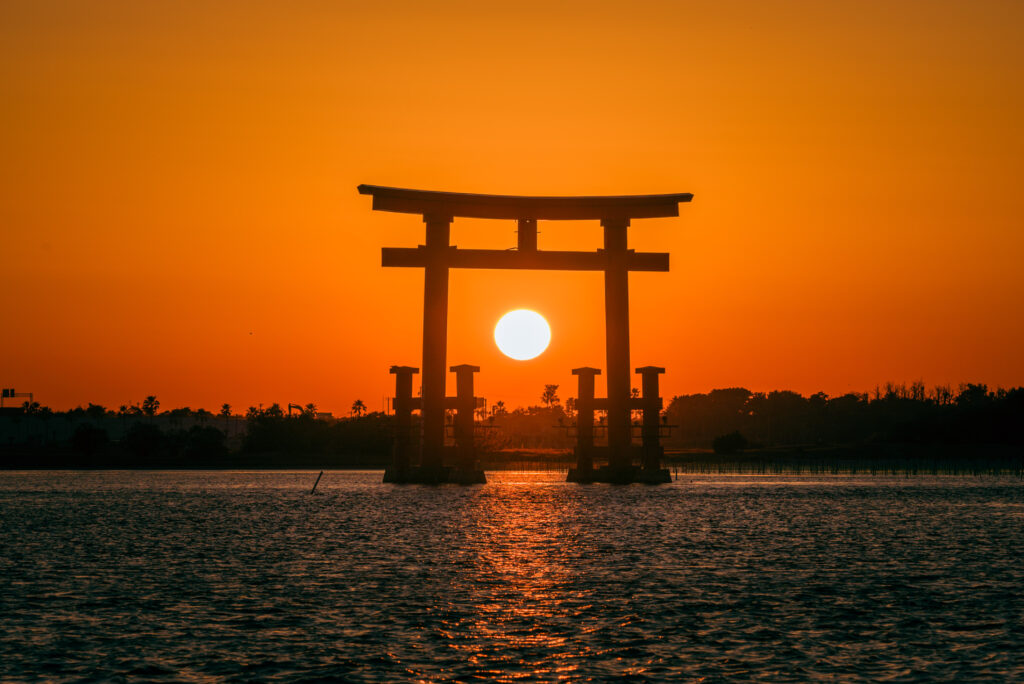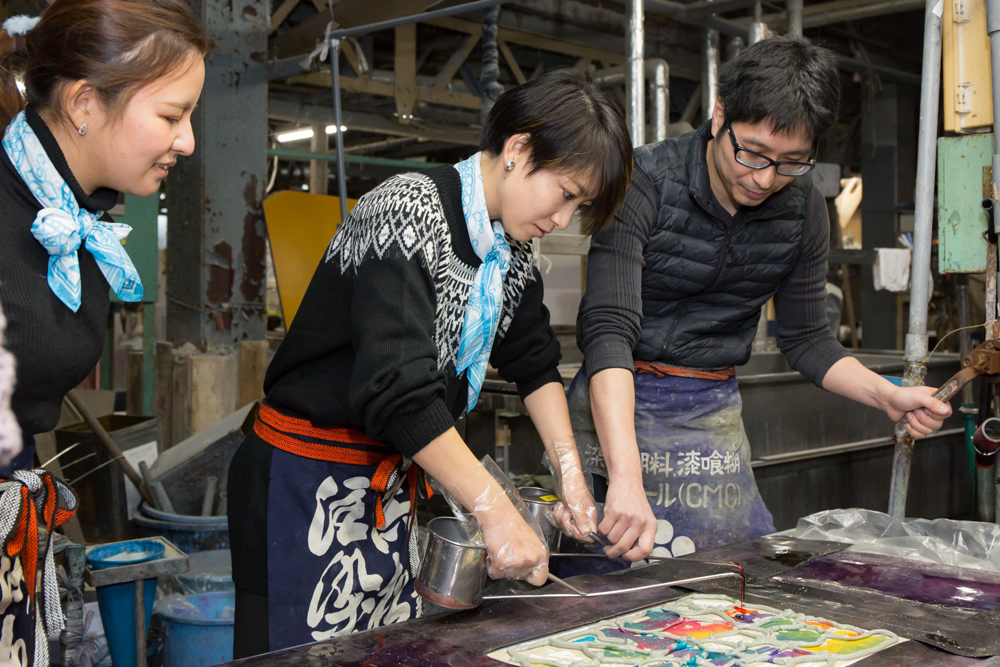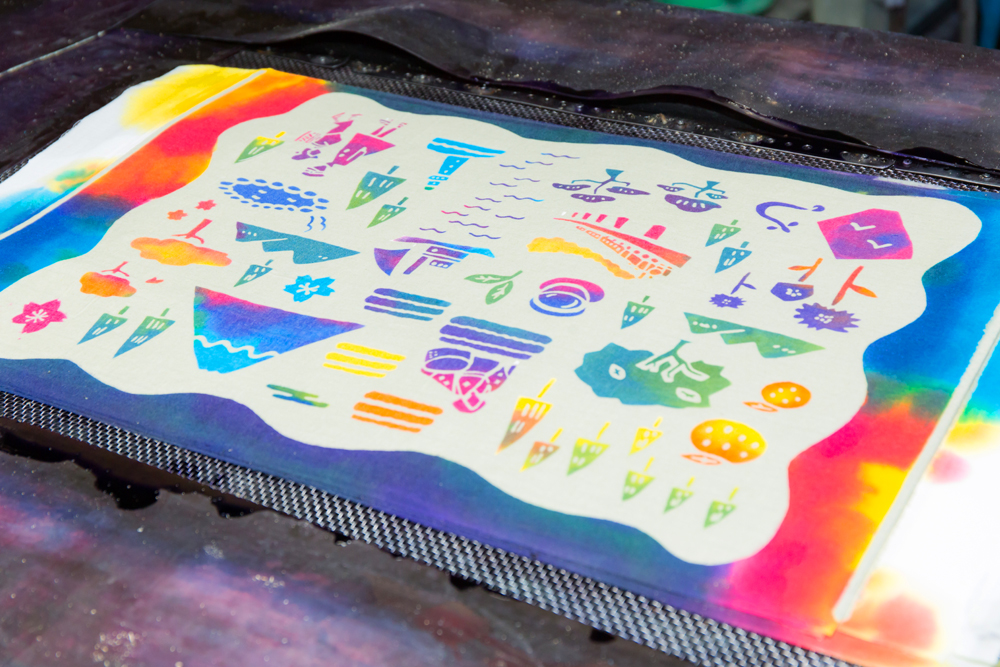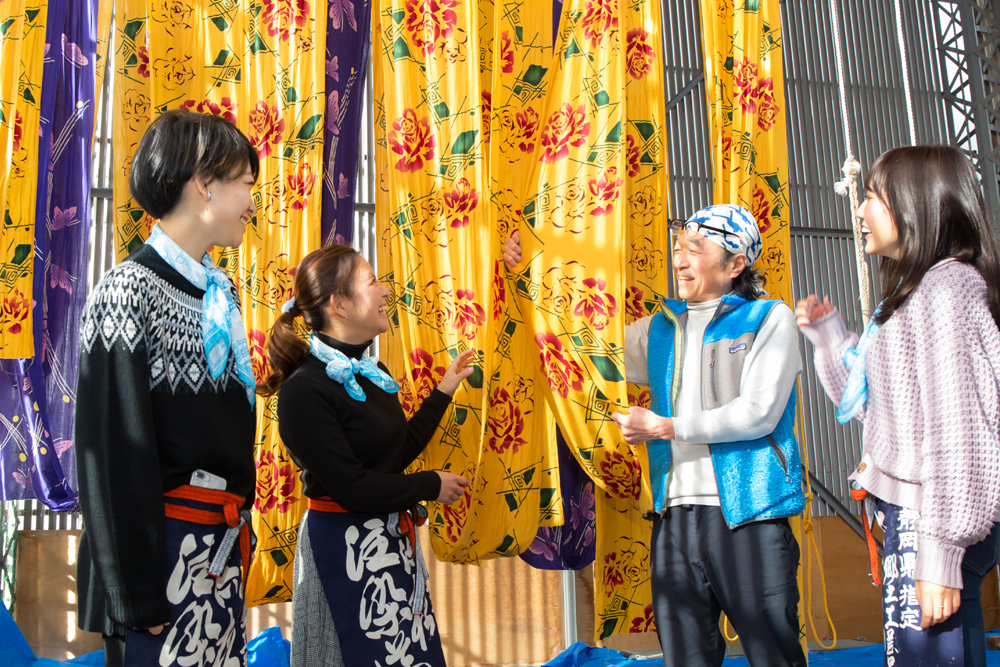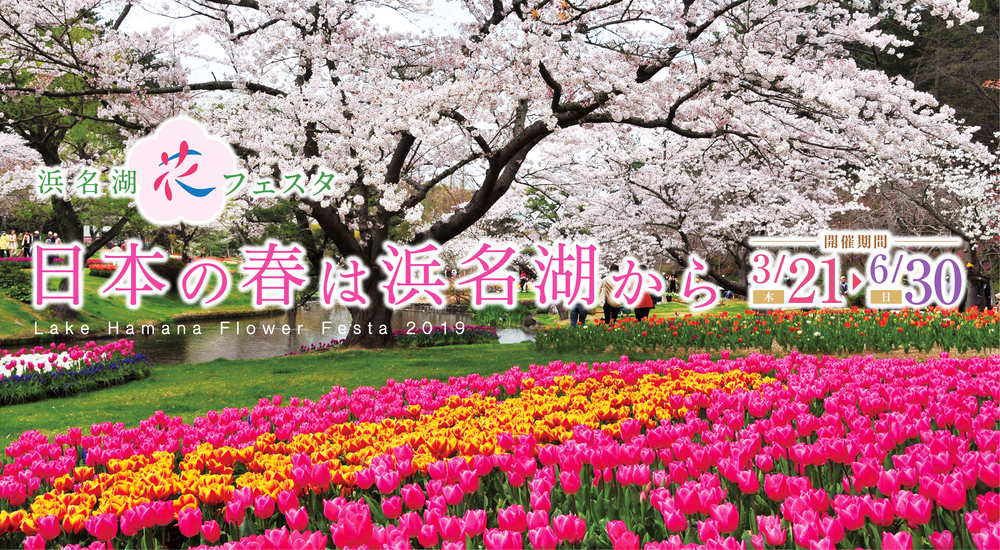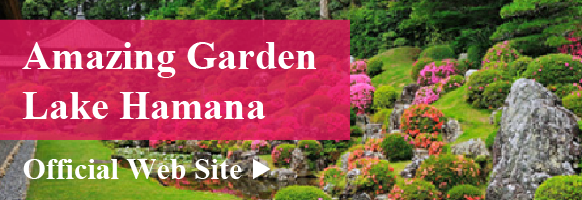Get to Know Hamamatsu
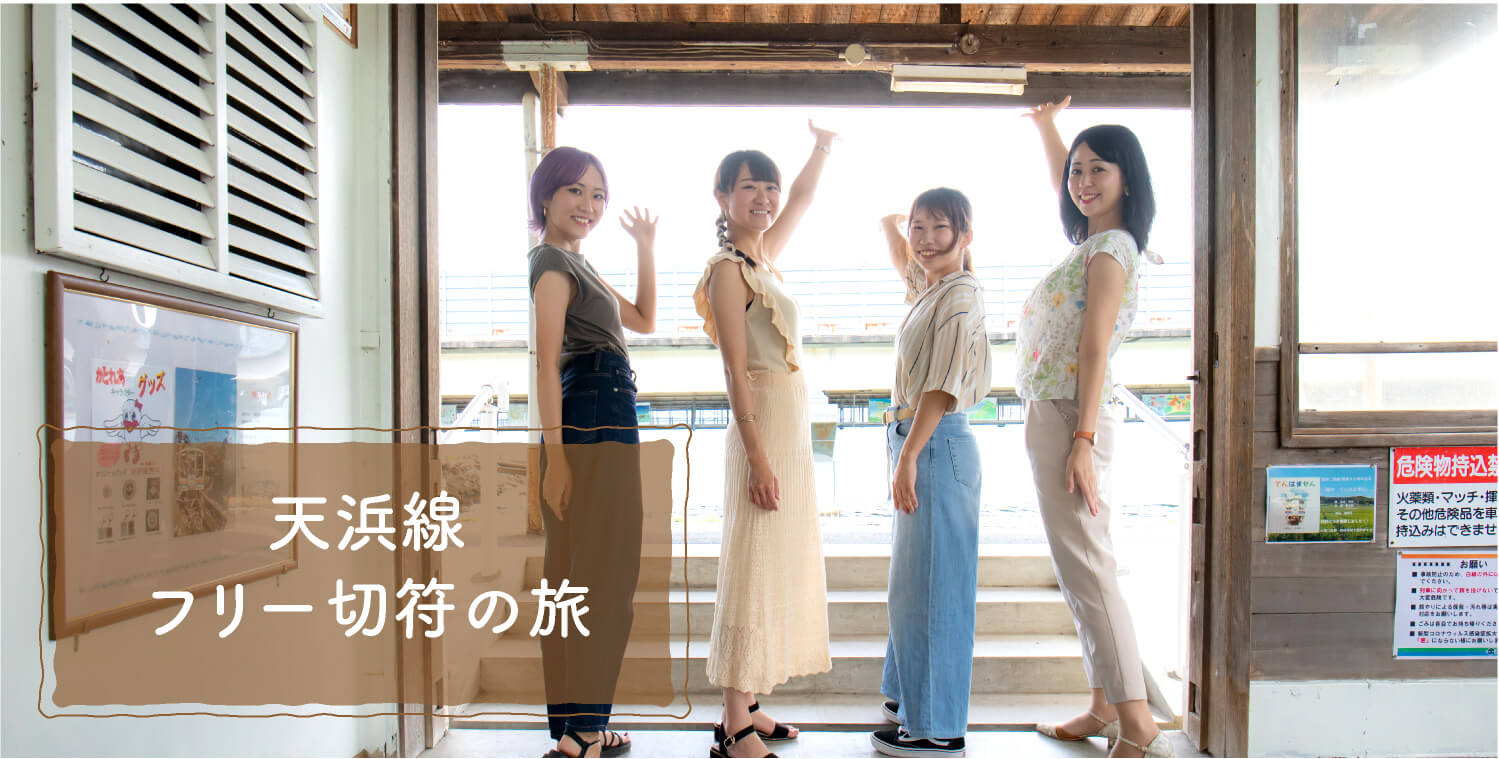
- Enjoy
- Eat
- Watch
- Buy
Tenhama Line Free Ticket Journey
The Tenryu Hamanako Railway is a local train that runs from Kakegawa Station in Kakegawa City, Shizuoka Prefecture to Shinjohara Station in Kosai City.
This railway, which runs along the northern shore of Lake Hamana, is loved by locals as a leisurely train that allows you to enjoy the scenery.
36 buildings and facilities along the line are registered as national tangible cultural properties, and there are many other attractive spots nearby.
We will introduce a model itinerary for enjoying the Tenryu Hamanako Railway using a one-day pass.
Fruit Picking

This agricultural park is surrounded by nature and grows 4,300 fruit trees of 120 varieties on an area the size of nine Tokyo Domes. You can enjoy harvesting a variety of fruits throughout the year in every season. This fruit park also has a restaurant and large playground equipment. The glamping facilities and winter illuminations are also very popular.
Hamamatsu Fruit Park Tokinosumika
Address: 4263-1 Miyakoda-cho, Hamana-ku, Hamamatsu-shi, Shizuoka
Telephone: 053-428-5211
Lunch at Kanasashi Station
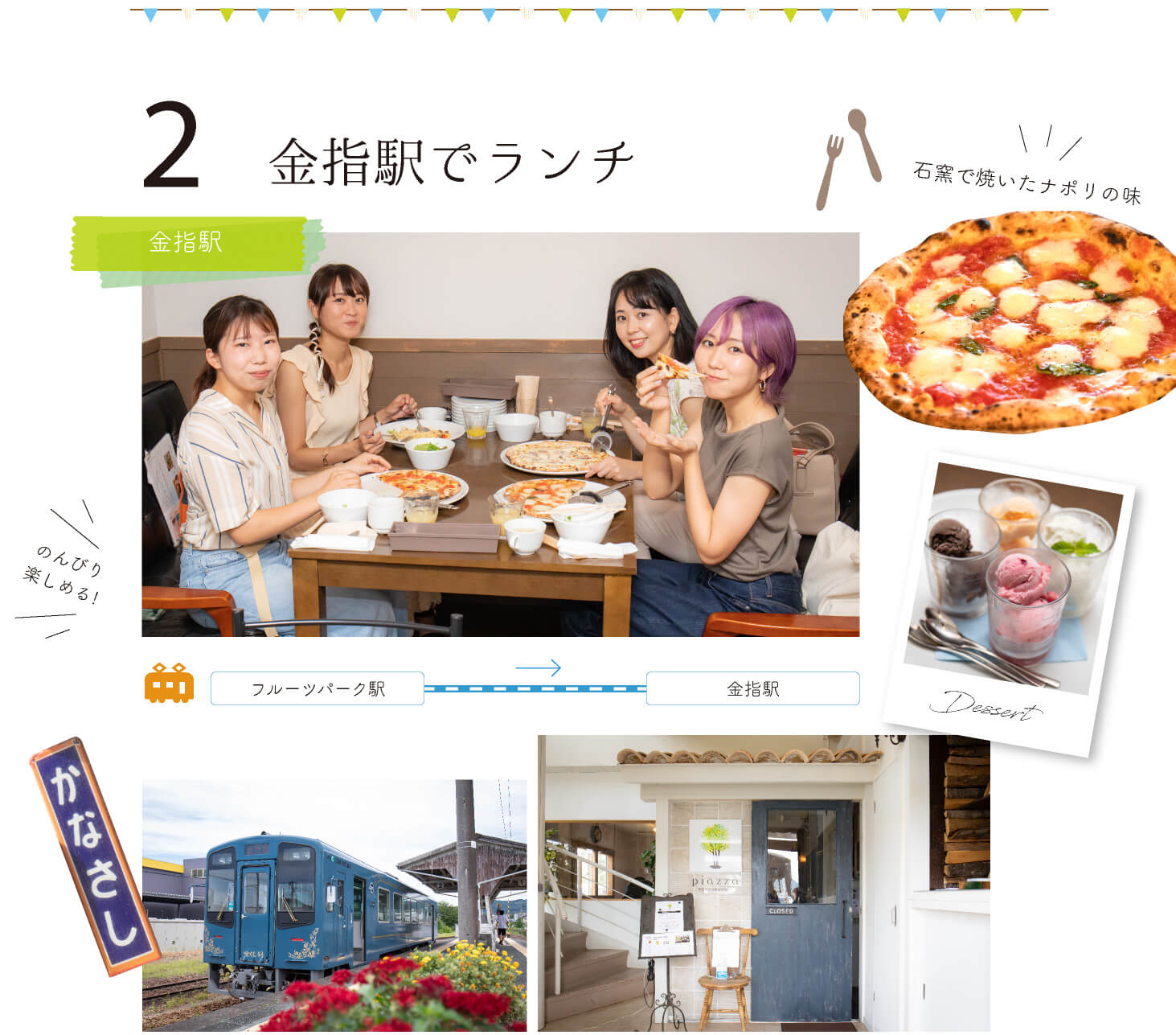
“Piazza”, a stone-oven baked pizza restaurant located at Kanasashi Station on the Tenhama Line, is a pizza and pasta restaurant adjacent to the Tenryu Hamanako Railway Kanasashi Station building. The owner is a pizza chef who has competed in the Italian World Pizza Championship seven times. You can enjoy pizza and pasta made with local pork and vegetables.
Piazza, stone-oven pizza, Kanasashi Station, Tenhama Line
Address: 1033-2 Kanasashi, Inasa-cho, Hamana-ku, Hamamatsu City
Tel: 053-542-2200
Click here for details (Instagram)
Photo Spot
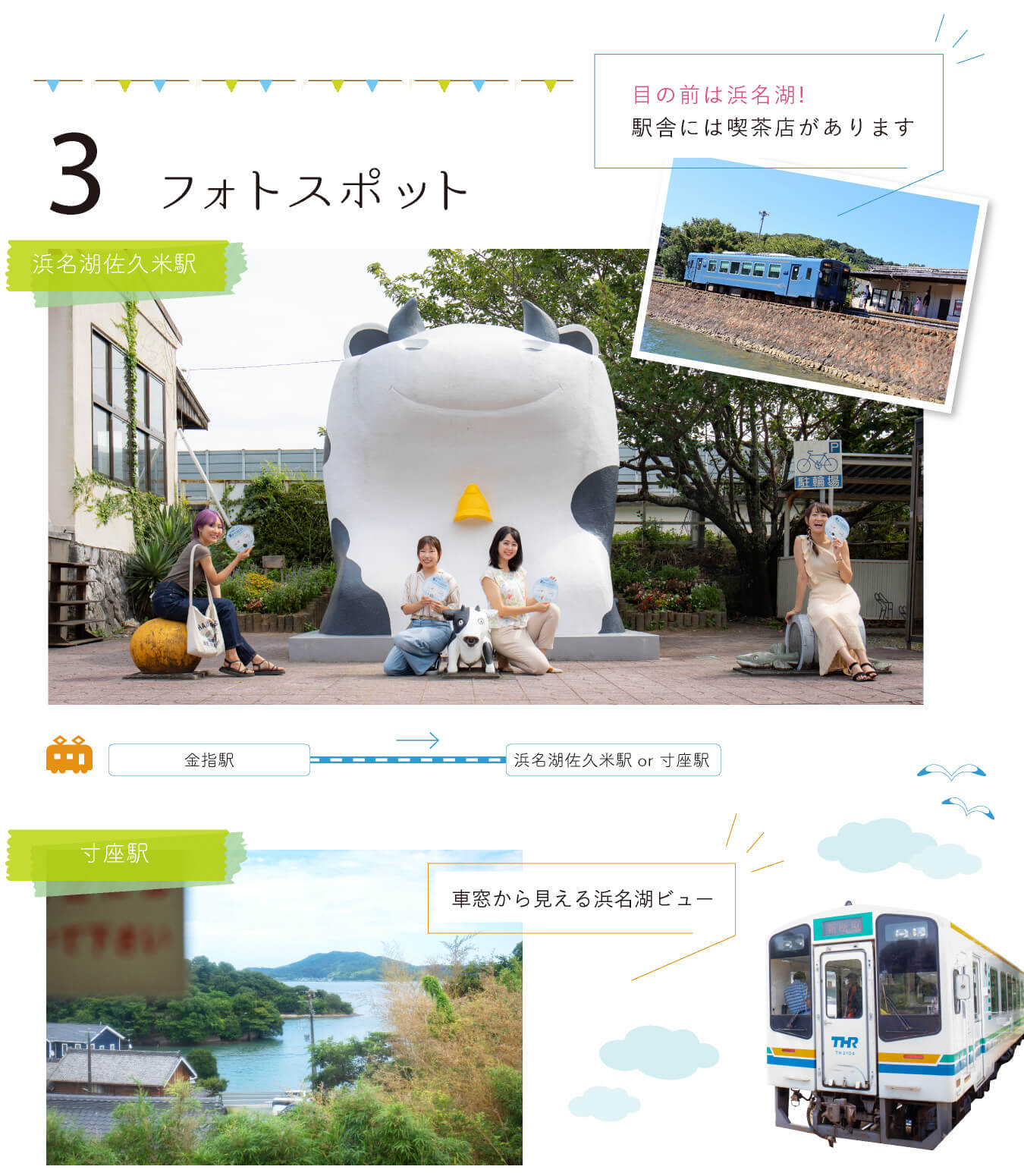
This small unmanned station is located on top of a small hill, and when you step onto the platform, the beautiful location of Lake Hamana spreads out before you. It is said that 1200 years ago, General Sakanoue no Tamuramaro took a short rest at this pass during his eastern expedition, and so the place got its name from the fact that he simply sat down for a moment. This station was the setting for the novel “Waiting for You at an Unmanned Station.” It’s a spot where you can sit on a wooden bench on the platform and look out over Lake Hamana while waiting for the train.
Stroll around Futamata Station
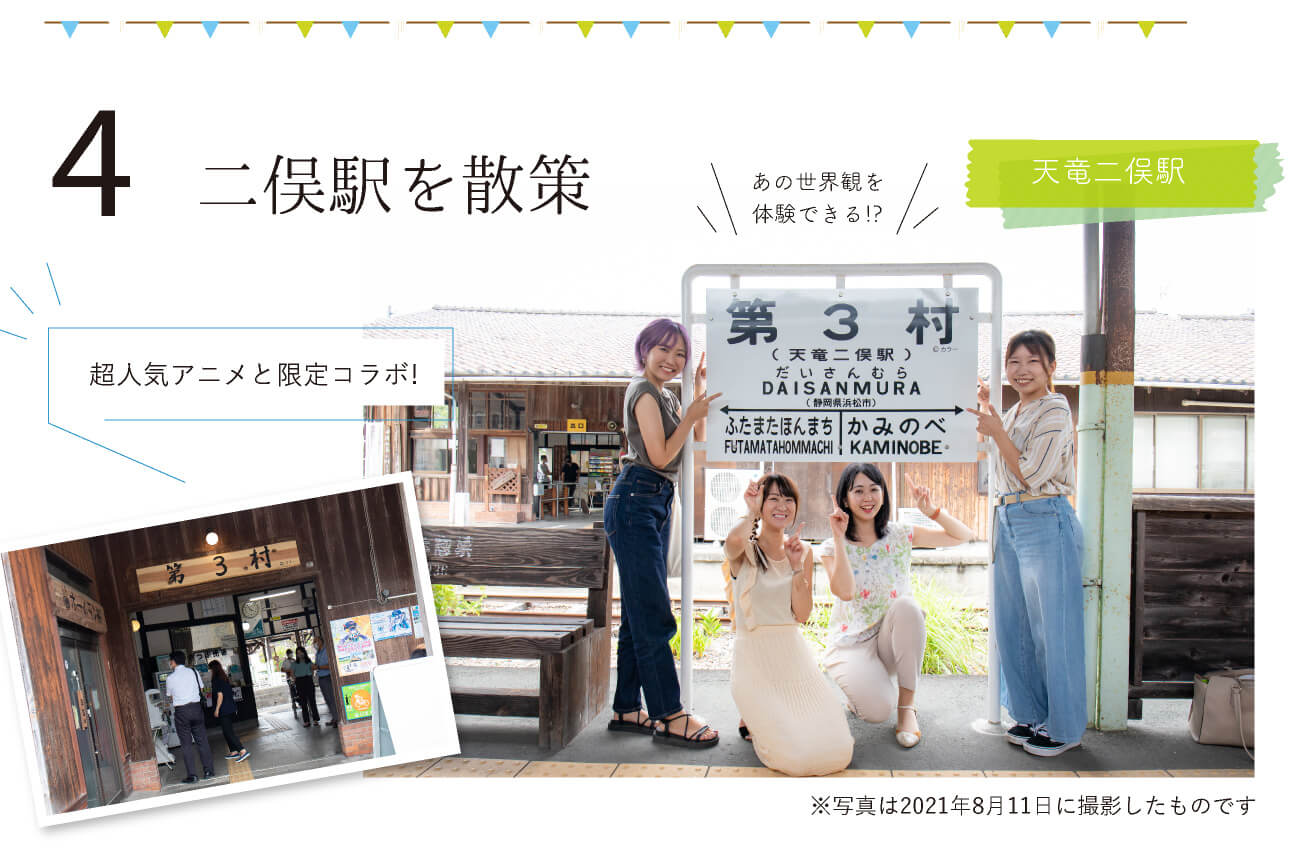
The wooden station building, constructed in 1940, is registered as a national tangible cultural property. The premises also feature a rare turntable and roundhouse (nationally registered tangible cultural property), creating a nostalgic atmosphere.

Tenryu Hamanako Railway Co., Ltd.
Address: 114-2 Akura, Futamata-cho, Tenryu-ku, Hamamatsu City
Telephone: 053-925-6125
Cycling in the Futamata area
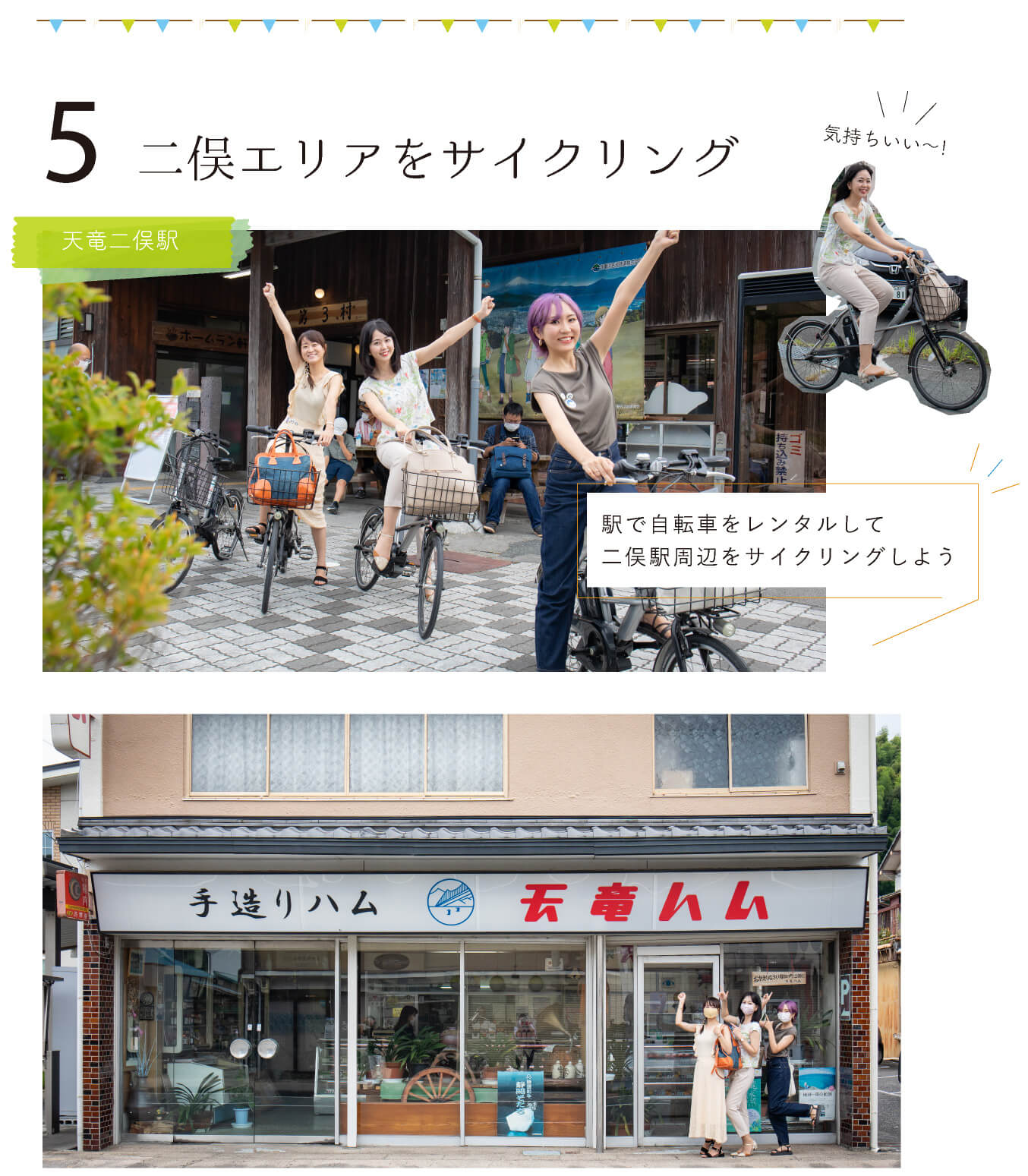
Located on the Clover Street shopping street in Tenryu-Futamata, this butcher shop was founded in 1934 and is beloved by locals. Not only meat but also homemade ham and bacon are popular.
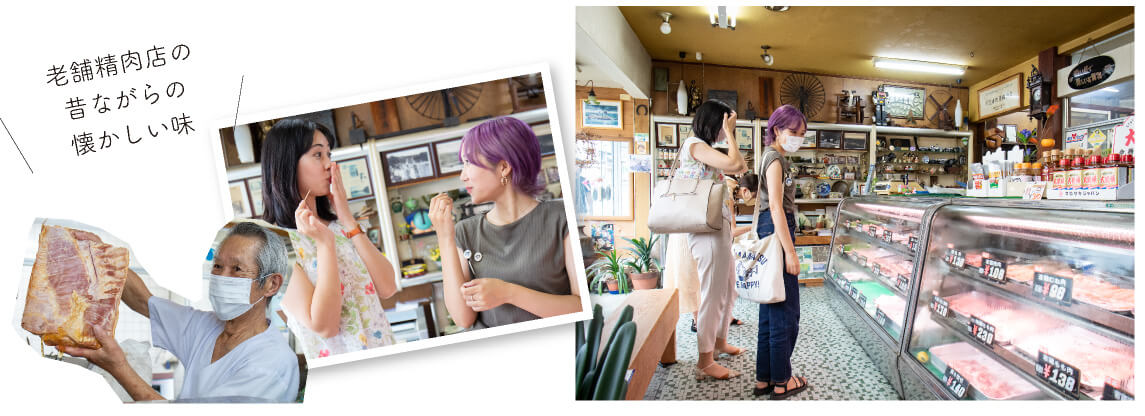
Yoshinoya Butcher Shop Tenryu Ham
Address: 1147 Futamata, Futamata-cho, Tenryu-ku, Hamamatsu
Tel: 0539-25-2003

A confectionery shop located in Futamata, Tenryu Ward, Hamamatsu City, founded in 1897. In addition to standard sweets such as Futamata Castle Monaka and Funagira Dam, the Tenryu Matcha Cheesecake, which uses high-quality matcha from the local Tenryu region, is a popular item with a cute package.
Muraseya
Address: 340-1 Futamata, Futamata-cho, Tenryu-ku, Hamamatsu City
Tel: 0120-172-348
Tel: 053-925-533
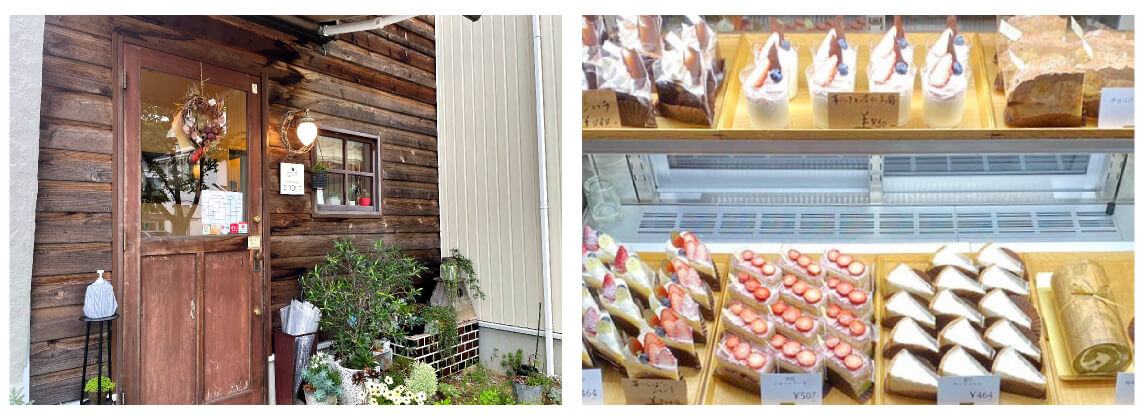
They sell cakes and baked goods made with plenty of ingredients from Haruno. One of the most popular items is the roll cake made with green tea from Haruno Town.
Mikokorie, a confectionery workshop in the forest
Address: 205-18 Futamata, Futamata-cho, Tenryu-ku, Hamamatsu
Tel: 053-545-4096
